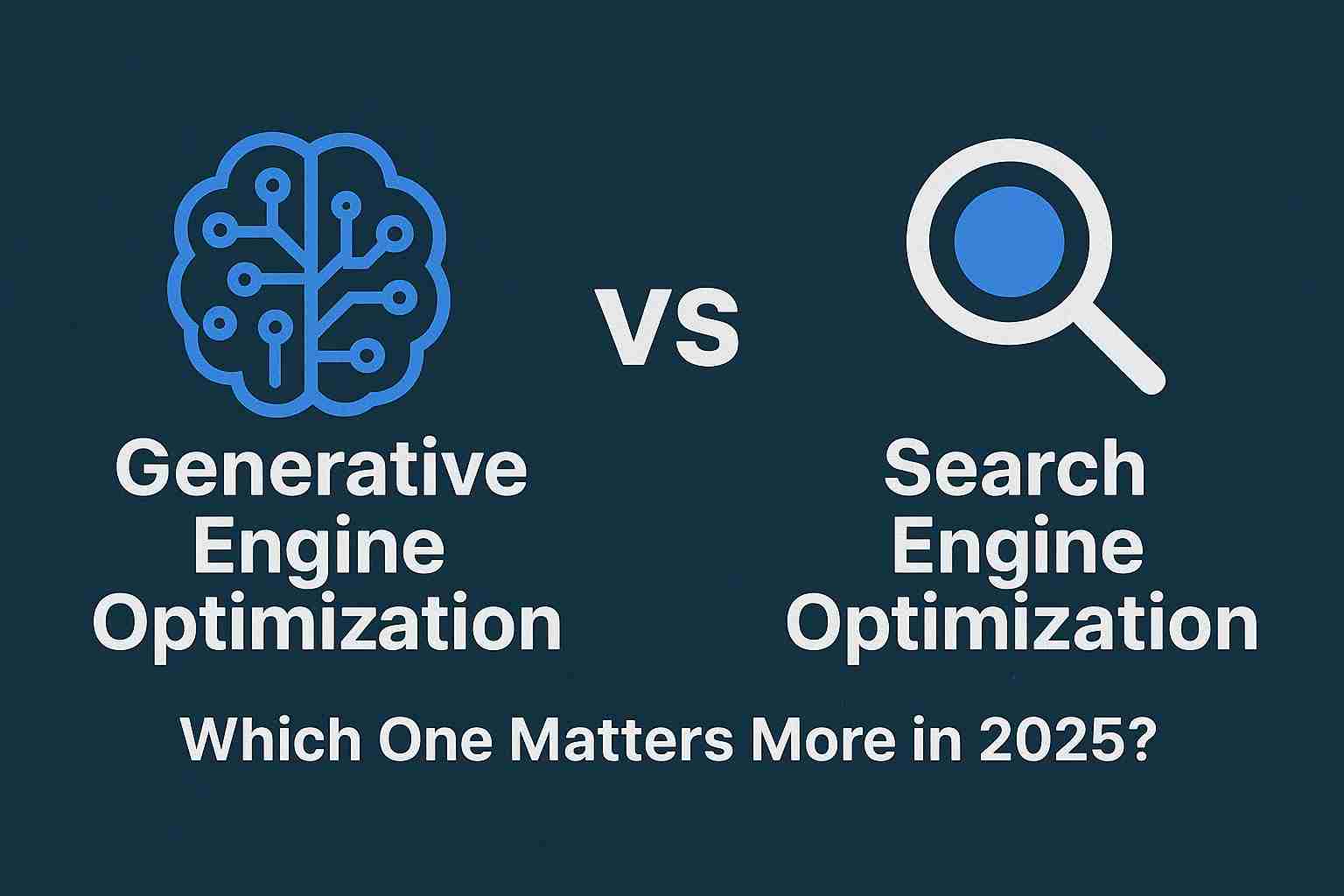
About Us
WebDesignVR works with both small and large companies to provide them with one-of-a-kind professional solutions for their businesses.
View More
WebDesignVR works with both small and large companies to provide them with one-of-a-kind professional solutions for their businesses.
View More
30 Sep 2025 SEO Guide Admin
The way people interact with the information found online is changing, and the ranking rules are changing too. For a long time, traditional Search Engine Optimization (SEO) has been the benchmark for improving visibility on search engines like Google. Now that Generative Engine Optimization (GEO) is on the scene, businesses are having a big question: which one should we focus on in 2025?
In this blog, we will talk about SEO vs GEO, what the differences are, and more importantly, what small businesses in the USA should do differently in their process.
SEO is the practice of making improvements on a website to rank higher in the search results (SERP in seo). It allows you to bring the organic traffic to your website by aligning your content with user intent and making it as easy as possible for a search engine to crawl and index the content.
SEO has been the backbone of online marketing for decades. Now, AI-generated search optimization is changing the rules of the game.
GEO is concerned with providing visibility and usability for your content across AI-powered search engines and AI Overviews. It is broader than merely ensuring visibility in traditional search engines such as Google. GEO requires ensuring that your content can be understood, summarized, and shared with users through AI assistants, chatbots, and generative engines.
AI-ready Formatting - Information is presented in ways that AI can extract and reframe easily.
Conversational Language - Content is written in natural language, especially in Q&A formats.
Content Optimization - The author provides clarity, richness, and context for the AI to interpret correctly.
Entity & Schema Markup - Information is presented and coded to be machine-readable and AI-ready.
Multimodal Content - Information is presented with images, videos, and in voice-friendly formats.
GEO is SEO 2.0. Instead of just striving for visibility in SERPs, you strive for visibility in AI summaries that are presented to users first.
_1759217121.png)
To take a closer view of how you can determine which has more value, a direct comparison of the two is helpful.
|
Feature |
SEO |
GEO |
|
Primary Focus |
Higher search engine ranking in SERPs |
Visibility in AI overview and generative engines |
|
Content Style |
Keyword-rich, structured, long-form |
Conversational, context-rich, AI-friendly |
|
Optimization Tools |
Backlinks, meta tags, technical SEO |
Schema markup, entity optimization, AI-driven formatting |
|
End User Experience |
Clicks to websites |
AI-generated summaries (zero-click searches) |
|
Main Goal |
Drive organic search traffic |
Drive AI visibility and credibility |
The searching landscape is different from what it was just a short time ago. Users have abandoned long-tail queries by typing in favor of naturally spoken language to AI-powered search engines.
Companies need to write for both traditional SEO and "AI search" intent.
SEO is still important, but AI is becoming more popular, and businesses need to pay attention to Generative Engine Optimization 2025. Here is why GEO is at the forefront of search:
SEO is still important, but AI is becoming more popular, and businesses need to pay attention to Generative Engine Optimization 2025. Here is why GEO is at the forefront of search:
If getting SEO means ranking in Google, GEO means being the answer in AI.
That being said, SEO is fortifying itself into our future because search engines process billions of queries a day, and organic search engine ranking is still a main driver of traffic.
Think of it as SEO gets companies ranked, and GEO gets companies seen in AI summarized search results.
Small businesses face cost and resource constraints when building a business website. Where should you focus your time and efforts?
Here is the practical way forward:
This dual-channel approach aims to keep businesses visible in both organic search engines and AI-driven platforms in the USA.
At WebdesignVR, we do understand your business doesn't have to choose one or the other. It is about layering both to get the very best reach.
This hybrid strategy will position your organization to thrive, as opposed to simply survive, in the ongoing evolution.
The fact of the matter is that in 2025, you will not have to choose between the two. SEO is the foundation that builds authority, while GEO is what will provide visibility in AI-based searches. Together, they build a future-proof strategy.
If you want your organization to remain visible across the search engines and AI, now is the time to combine both. The right partner, like WebdesignVR, can help you rise to the top of the SERP in seo as well as inside the AI overviews.

Lorem Ipsum has been the industry's standard dummy text ever since the 1500s, when an unknown printer took a galley of type and scrambled it to make a type specimen book.